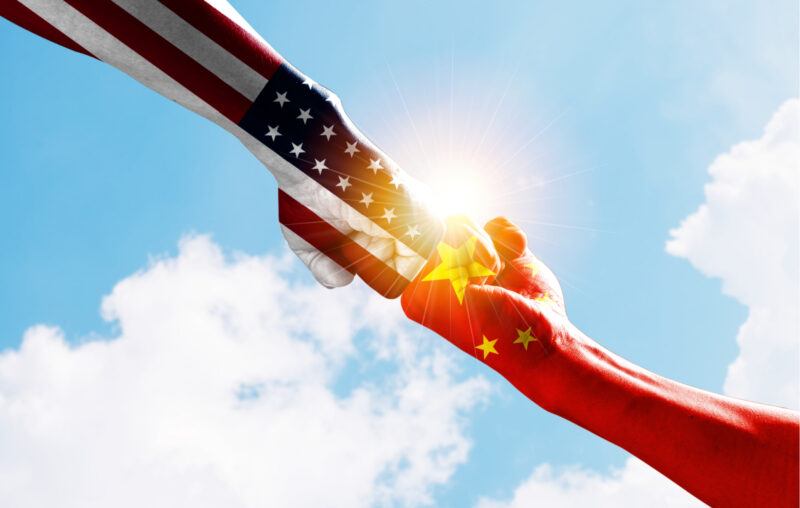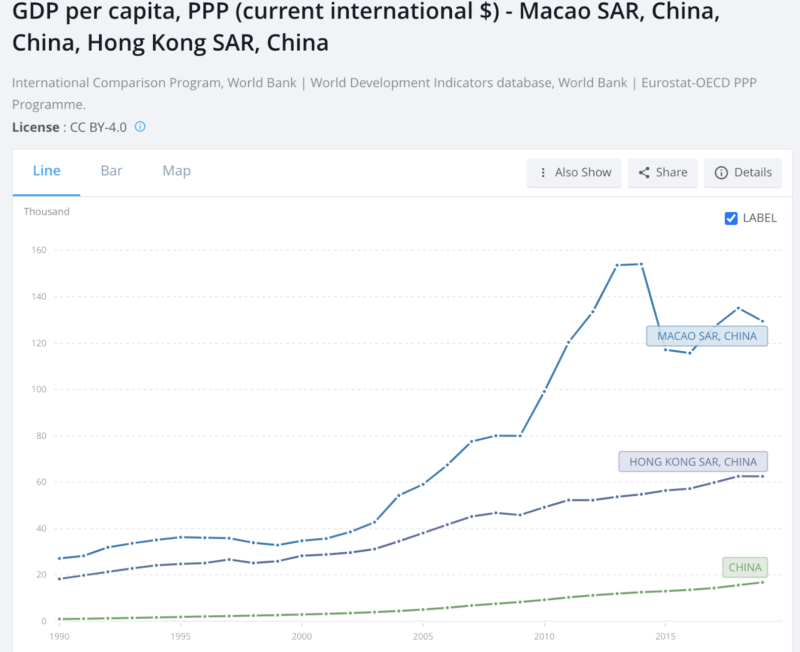Competing With China Shouldn’t Entail Becoming More Like China

President Joe Biden delivered a speech to a Joint Session of Congress on April 28, 2021 where he made the following remark that should be seen as a red flag:
“America is moving — moving forward — but we can’t stop now. We’re in competition with China and other countries to win the 21st century. We’re at a great inflection point in history.”
First and foremost, what does “winning the 21st century” even mean? How do we even “compete with China” on winning a century? What are we competing in? Military conflict? I hope not. Trade? Trade is not a competition you can “win.” The last time I checked, international relations wasn’t a track meet.
It shouldn’t take a background in political science to understand where Biden is going with his statement because he said what he meant during the speech.
When Biden said he wants to compete with China he wasn’t referring to a focused plan to contain Chinese military expansion, curb the expansion of authoritarianism, and maintain US primacy in the Asia-Pacific. He said the following,
“We have to build back better. We have to compete more strenuously than we have.
Throughout our history, if you think about it, public investment and infrastructure has transformed America — our attitudes, as well as our opportunities.
The transcontinental railroad, the interstate highways united two oceans and brought a totally new age of progress to the United States of America.
Universal public schools and college aid opened wide the doors of opportunity.
Scientific breakthroughs took us to the Moon — now we’re on Mars; discovering vaccines; gave us the Internet and so much more.
These are the investments we made together as one country, and investments that only the government was in a position to make. Time and again, they propel us into the future.”
This is not a plan to contain Chinese influence. It’s a plan to see which country could spend the most money at the federal level and centrally plan everything. This neo-Keynesian push is based on the tired old models of state spending and central planning. It’s not an innovative or bold platform, it’s the same basket of ideas that were thoroughly discredited in the 1970s while the power of free trade and liberalized markets made the world a more prosperous place.
What Biden Gets Wrong About China
The glaring issue at hand is that Biden is focusing on the wrong issues when it comes to China. He is assuming that China became rich and powerful because it has a large active state when exactly the opposite is true. The reason for China’s rapid economic progress was because of its market liberalization policies in 1978 after the horrors of Mao Zedong’s communist policies. Even now China maintains a Leninist approach to economic policy, which is essentially a form of socialism that accepts the use of markets to gain power, albeit with strong amounts of state control. It is the existence of markets in China that has given them the resources to fund infrastructure and military expansion, not the other way around. With a population four times greater than the United States, China is punching well below its weight while the US is punching well above its own in comparison. China’s formidable economic and military relevance is mostly due to its massive population, not the brilliance of its political model. The exact opposite is true about the United States.
Although China is rapidly developing, which is a good thing for both the Chinese and the world, its GDP is likely inflated due to careful manipulation of output numbers as well as its famously ambitious but also somewhat useless infrastructure projects, which the Biden administration seems to want to emulate. A study published by Yale accounting professor Frank Zhang suggests,
“Local Chinese governments often inflate GDP figures in order to meet targets. Some officials may do so by pushing through projects without long-term economic value, such as unnecessary infrastructure investments, while others fabricate numbers outright.”
The Chinese are building bridges to nowhere, which not only inflates their GDP numbers to give the impression of strength but is also highly counterproductive. There are entire cities that have been built that are almost empty. This is central planning in a nutshell and we should leave this idea in the 20th century. Infrastructure spending should be kept prudent and the United States should continue to rely on its innovative private sector which is still the envy of the world. This is exactly why the Chinese have forced intellectual property transfers from American companies that wish to do business in China and not the other way around.
China’s model of frequent state intervention and large public expenditures is also very damaging to its long-term growth. Its limited market policies combined with its massive population give it a large total GDP, but its GDP per capita is still dismally low compared to the United States. CNBC writes,
“With about four times the number of people as the U.S., China’s per capita GDP rose to around $11,000 in 2020, while that of the U.S. was more than five times greater at $63,200.”
The average person in China is not well off by any means and does not have access to anywhere near the same standard of living as those in the United States because the economic policy environment in China is not conducive for widespread prosperity. One only needs to look at the market policies practiced in China’s special autonomous regions like Hong Kong and Macau, which are as rich if not richer than many Western countries to see the stark reality of China’s interventionist economic activity.

If anything, when we look at China, we should see a case study on why the traditional American values of markets and openness generate prosperity, not big government.
A report published by the American Enterprise Institute even predicts that the Chinese economy is set to stagnate. The reasons include an aging population, rising debt, state domination of the economy, and an unlikeliness to adopt pro-growth policies such as further liberalizing markets. China would do best to adopt reforms similar to traditional American values such as liberal immigration to adjust for an aging workforce, limited government fundamentals to ease rising debt, privatization to mitigate the inefficiency of state-owned monopolies, and free markets to drive innovation.
The irony of the situation is that all these principles are under attack here in the United States. When we look at our geopolitical rivalry with China, we should see a clear reason why we need to double down on our core principles, not change them.
Key Takeaways
It would be foolish to suggest that the United States is not in an existential geopolitical rivalry with the People’s Republic of China. However, that rivalry is characterized by specific strategic, economic, and human rights goals, not a federal spending spree. Invoking our geopolitical rivalry with China as a vague excuse to forward a radical expansion of the US federal government is either a misleading bait-and-switch or a misguided policy agenda. It wouldn’t be surprising if it was both.
When we talk about competing with China to win the 21st century we first need to be very clear on what that means. President Biden’s rhetoric seems to suggest he just wants to use the geopolitical tensions between the US and China as an excuse to pass his list of big government policies. The massive expansion of state power into the American economy is not a novel innovation in response to China but a failed and tired dream held by Progressives since the early 20th century. If Biden were serious about competing with the Chinese geopolitically there are two basic steps he can take that would work. The first is to ensure that the United States has the strategic and military capabilities to contain China, which includes building new relationships and getting the US military out of unnecessary adventures. The second is ensuring the US economy remains one of the most respected in the world by passing pro-growth policies domestically and being a leader in global free trade. None of this requires blowing up public expenditures.










